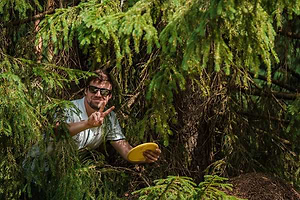Turn vs Fade in Disc Golf: Understanding the Difference
TOC
Table of Contents
Among the first terms you need to learn in disc golf are Turn vs Fade. These two disc golf vocab words can tell you a lot about how a disc behaves in the air. This blog will explain each, provide disc examples, and share how the two interact with each other.
RHBH Disclaimer: For this article, we will be referring to players throwing with their right hand for a backhand throw (RHBH). Flights described will be the opposite for left handed throwers. The same goes for right handed forehand throws. Left handed forehand throws fly similar to RHBH throws.
What is Turn in Disc Golf?
Turn is the tendency of a disc to veer to the right (when thrown RHBH) during the midway point in flight or sooner. The amount of Turn varies by disc. The more Turn a disc has the more understable it is considered.
It’s important to know how much Turn your disc possesses so that you know when to throw it and how to throw it. Look at the Rollo Diagram below: See how the its flight path contours to the right? That’s textbook understable.
So how do you know how much Turn your disc has? Read on …
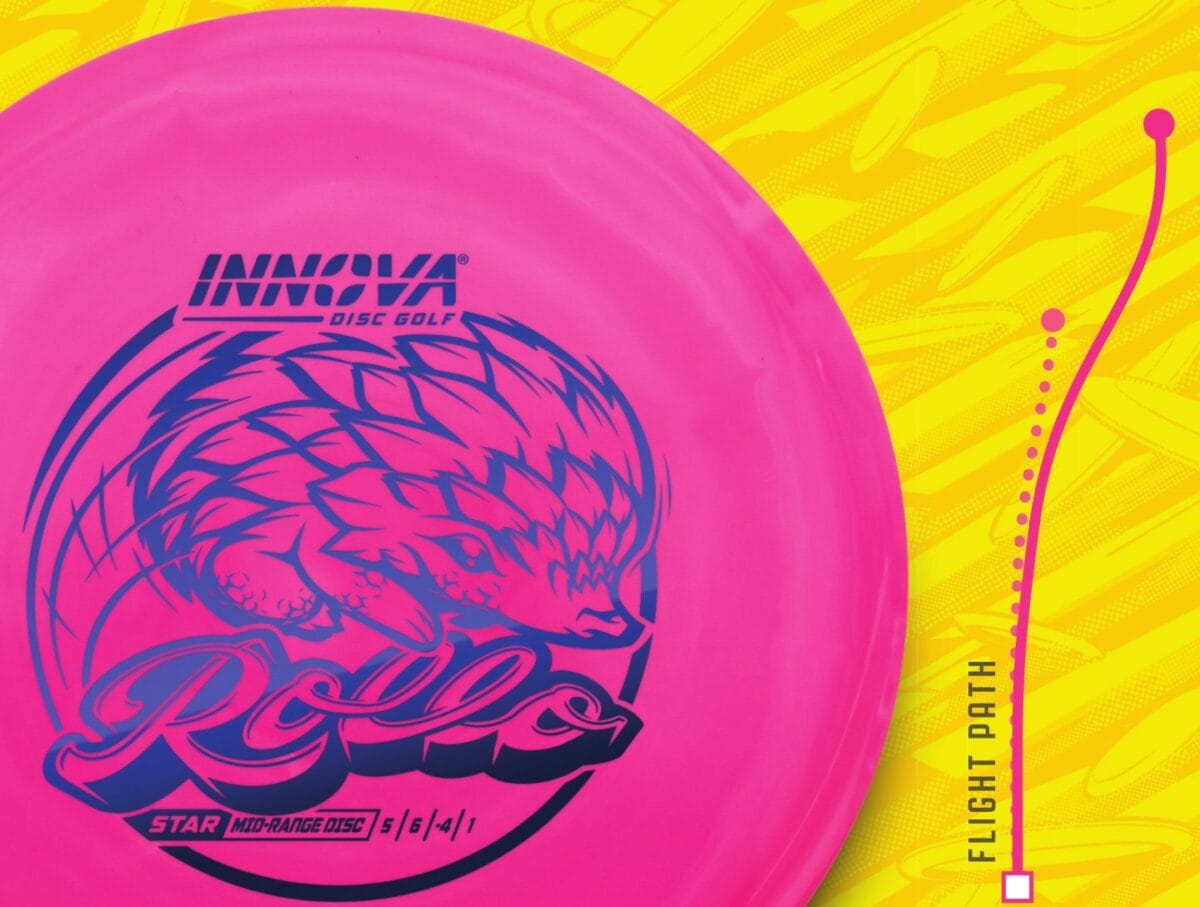
How Turn is Rated
Each disc is assigned four flight ratings or disc numbers (more on this later). The third rating is Turn, which ranges from a -5 (the highest degree of Turn) all the way to 0 (no Turn at all). And, if you can believe it, there are even a few discs like the Toro that have a +1 Turn (A positive turn rating indicates a resistance to turn during the high speed portion of the flight). Learn more about +1 Turn at the end of this blog.
Most discs fall in between the 0 and -3 Turn rating. Putt and approach discs generally have little to no Turn since they are designed to hold the line they’re thrown on. Turn varies on midrange and drivers because of the varied usage of those discs.
Innova discs with various Turn ratings.
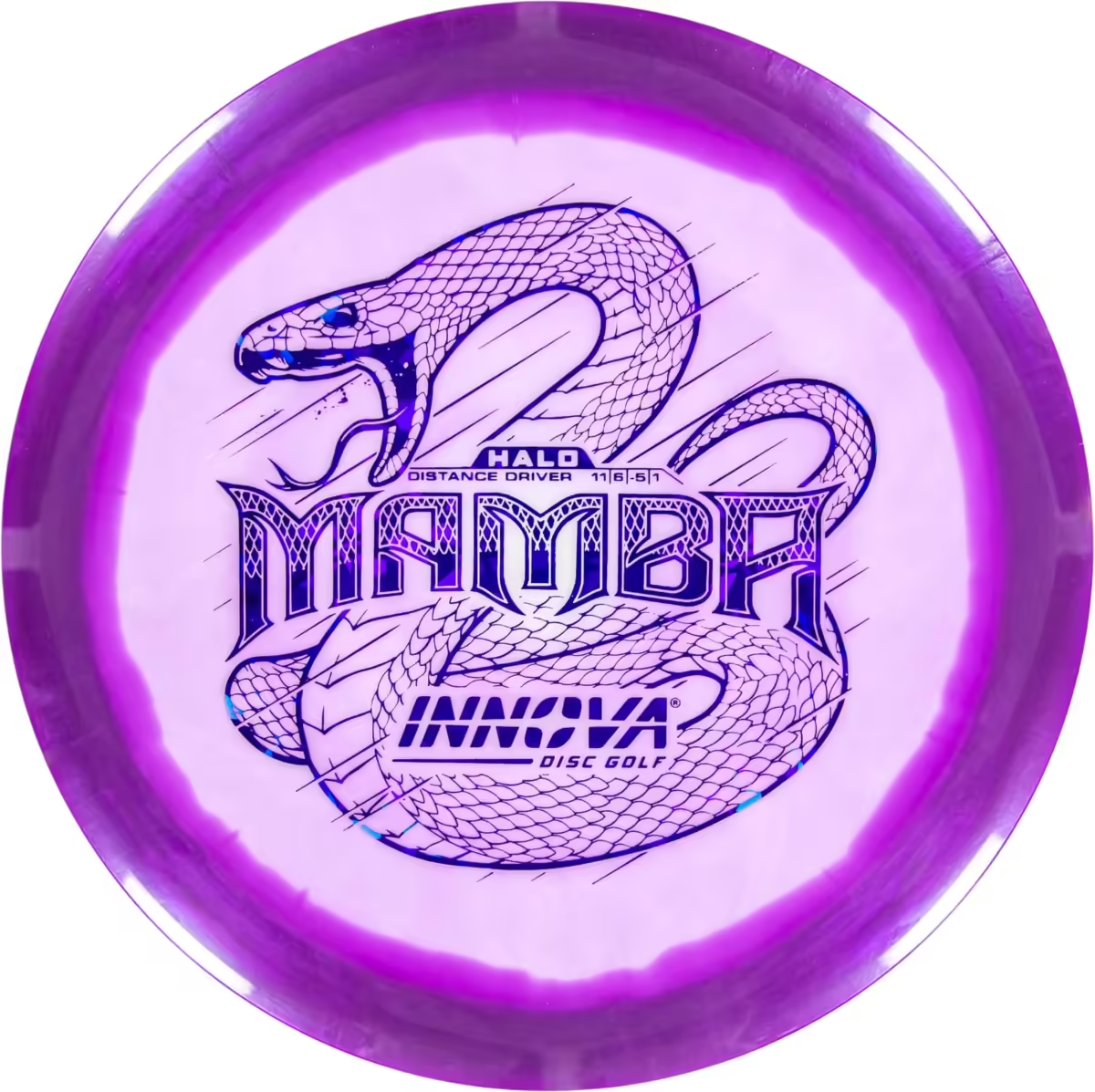
-5 Turn: The Innova Mamba is a very understable distance driver. It’s maxed out Turn produces automatic turnover shots makes it a distancer gainer for less powerful players.

-2 Turn: The Innova Leopard is a stable to understable fairway driver. It’s moderate Turn makes it easy to throw medium length accurate drives.
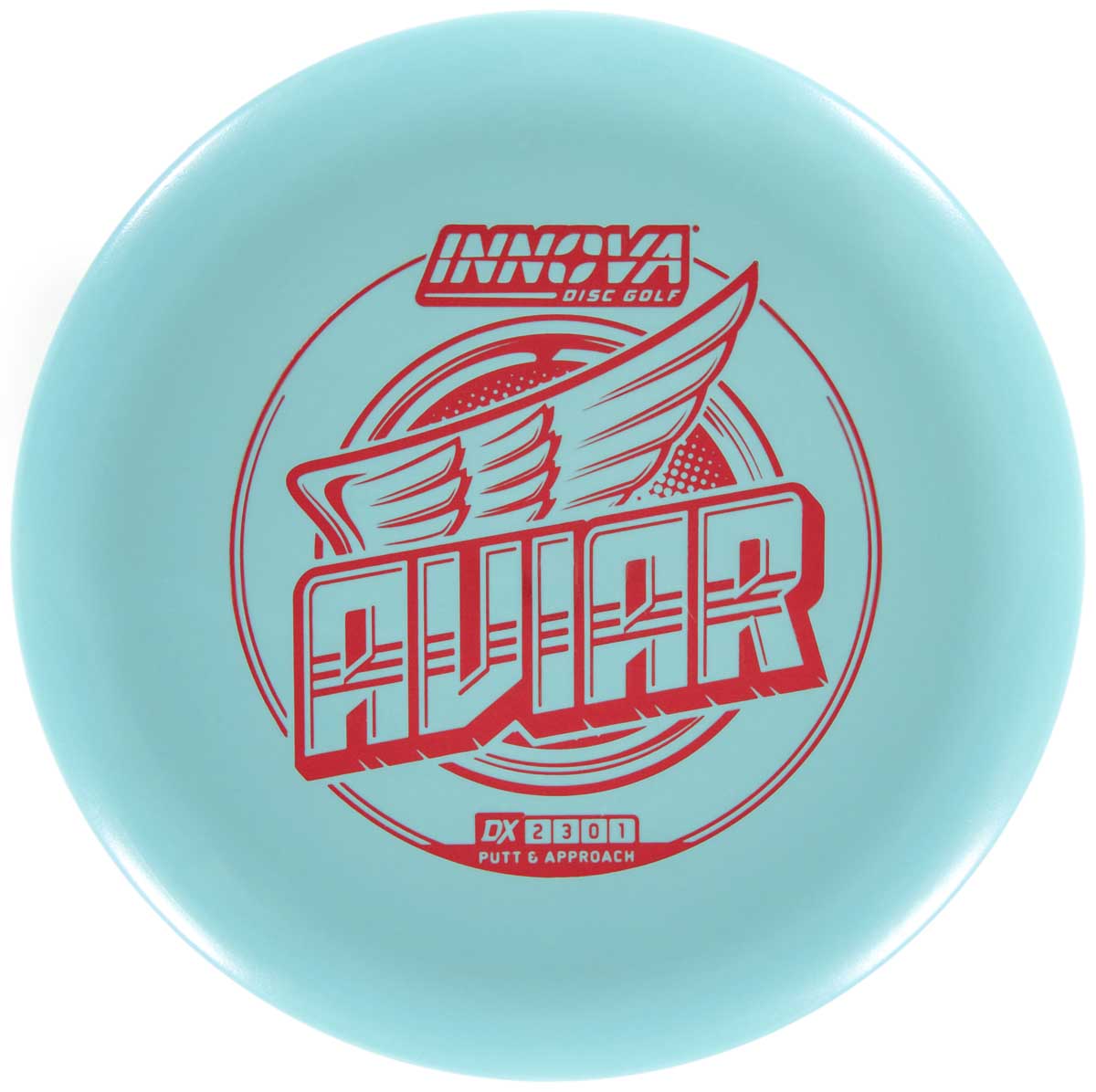
0 Turn: The Innova Aviar Putt & Approach is one of the most popular discs ever thrown. Its 0 Turn allows it to stick to the line it was thrown on.
**Keep in mind that the disc’s other flight numbers, notably Fade, play a role in the disc’s stability. Let’s look more at the flight ratings/numbers here.
What are the Flight Numbers?
Disc golf flight numbers (or ratings) show how a disc is designed to fly. Each disc is given a numeric rating from four flight categories: Speed, Glide, Turn, and Fade. This system allows for disc comparison and for players to preview discs before throwing them. Look at our Disc Golf Numbers blog to get a complete explanation of this topic.
Why is it Referred to as “High-Speed Turn”?
A disc must reach a certain speed to demonstrate Turn. That means if a player does not throw with enough power, the disc will either fly straight (without employing Turn) or hook into Fade soon after the throw. More on Fade in a minute.
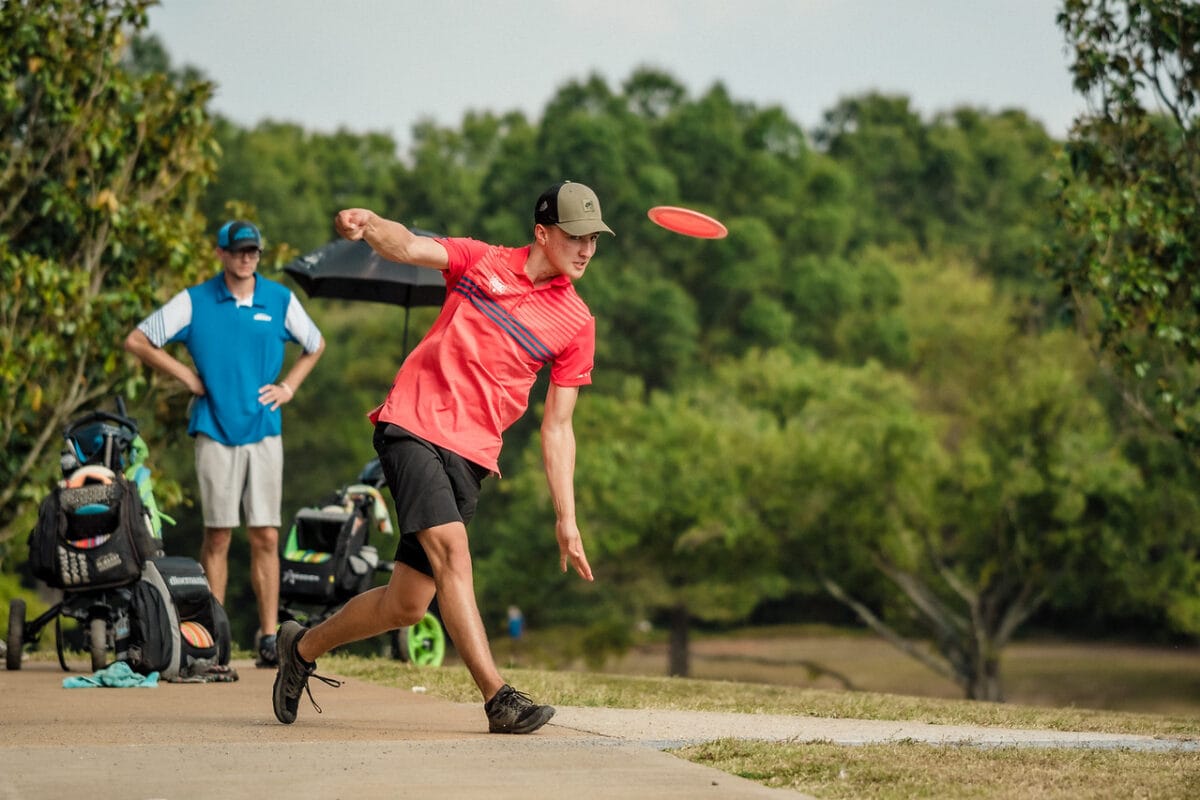
How Wind & Other Things Affect Turn
Wind does affect Turn, but it’s pretty simple when you think about it: tailwind = less Turn. While, a headwind = more Turn. This is the case for all discs. In addition to that, a more worn-in, or beat-in disc can also exhibit more Turn. Go to our Disc Golf in the Wind blog for tips on how to play in blustery weather.
How to Throw Discs with Turn
Discs with lots of Turn usually don’t need too much help to perform that maneuver in flight. Most average players just need to throw the disc flat and a Turn will result. For very understable discs, you may need to apply some hyzer angle to the disc, otherwise it may turn completely over and result in a roller.
Types of Shots with High Turn Discs
What is Fade in Disc Golf?
Fade is the degree a disc will hook left (RHBH) toward the ground once it starts decelerating at the end of its flight. The more Fade a disc has the more overstable it is (for the most part). Discs with a bunch of Fade can be difficult to keep in line, especially for newer players. That’s why it’s important to understand it and know how much your disc contains. Check out the Toro Diagram below: See how the flight path hooks hard to the left? That’s the tell-tale sign of a disc with significant Fade.
So how do you how much Fade does your disc have? Read on …
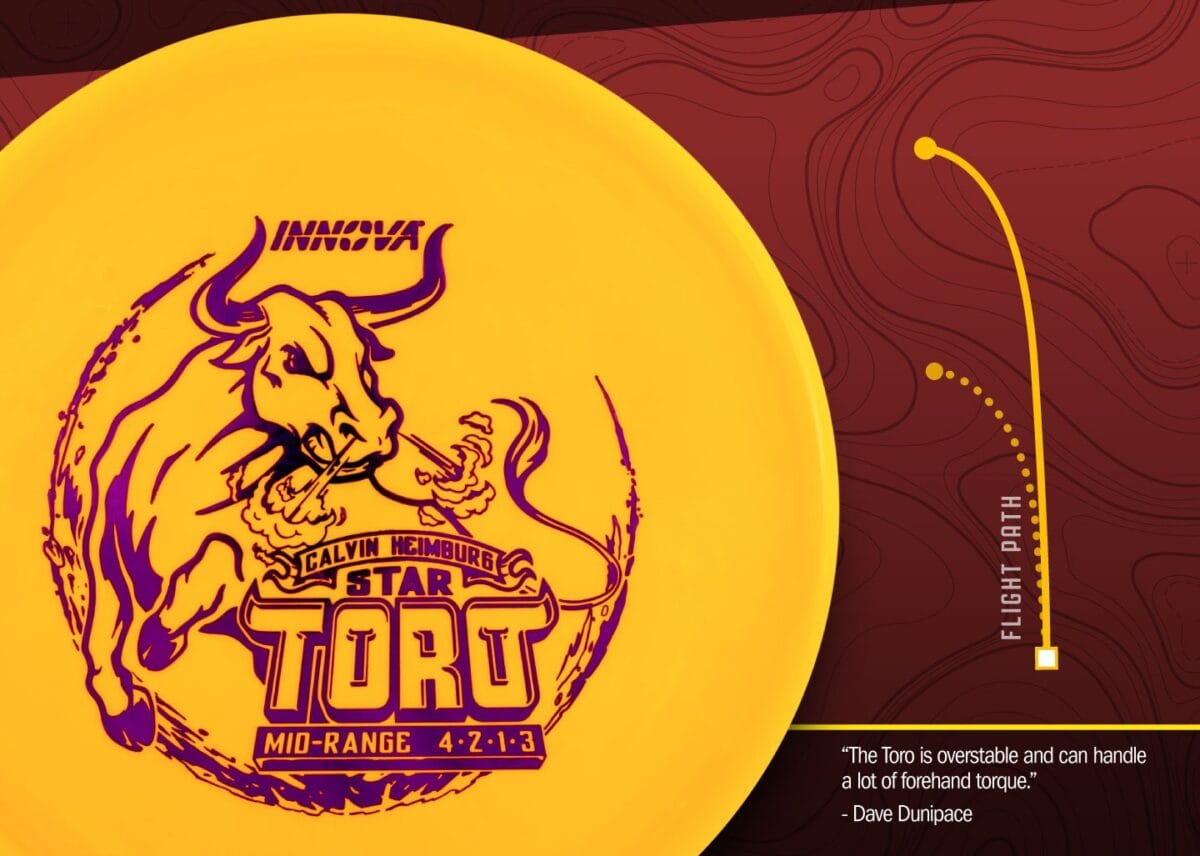
How Fade is Rated
Fade is the fourth flight rating (or disc numbers) and is measured on a scale that ranges from 5 (the highest Fade) to 0 . Most discs will have a Fade rating between 0 and 2. Generally all discs outside the putt & approach family have some sort of Fade (Innova’s one exception being the straight flying Mako3 midrange with 0 Fade).
Innova discs with various Fade ratings.
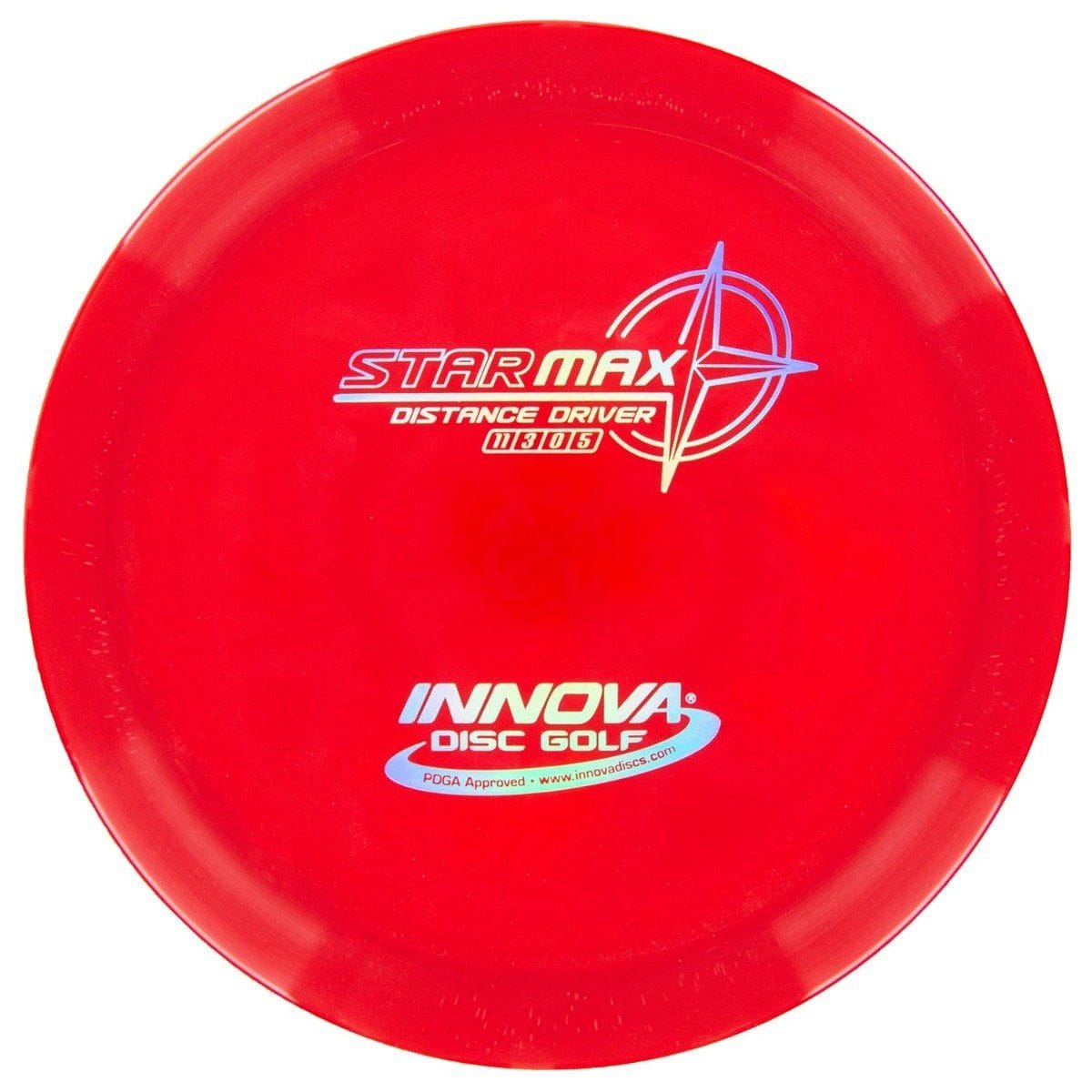
5 Fade: The Innova Max is one of Innova’s most overstable distance drivers. Its extremely high Fade ensures that this driver will hook back no matter the throw or wind condition.
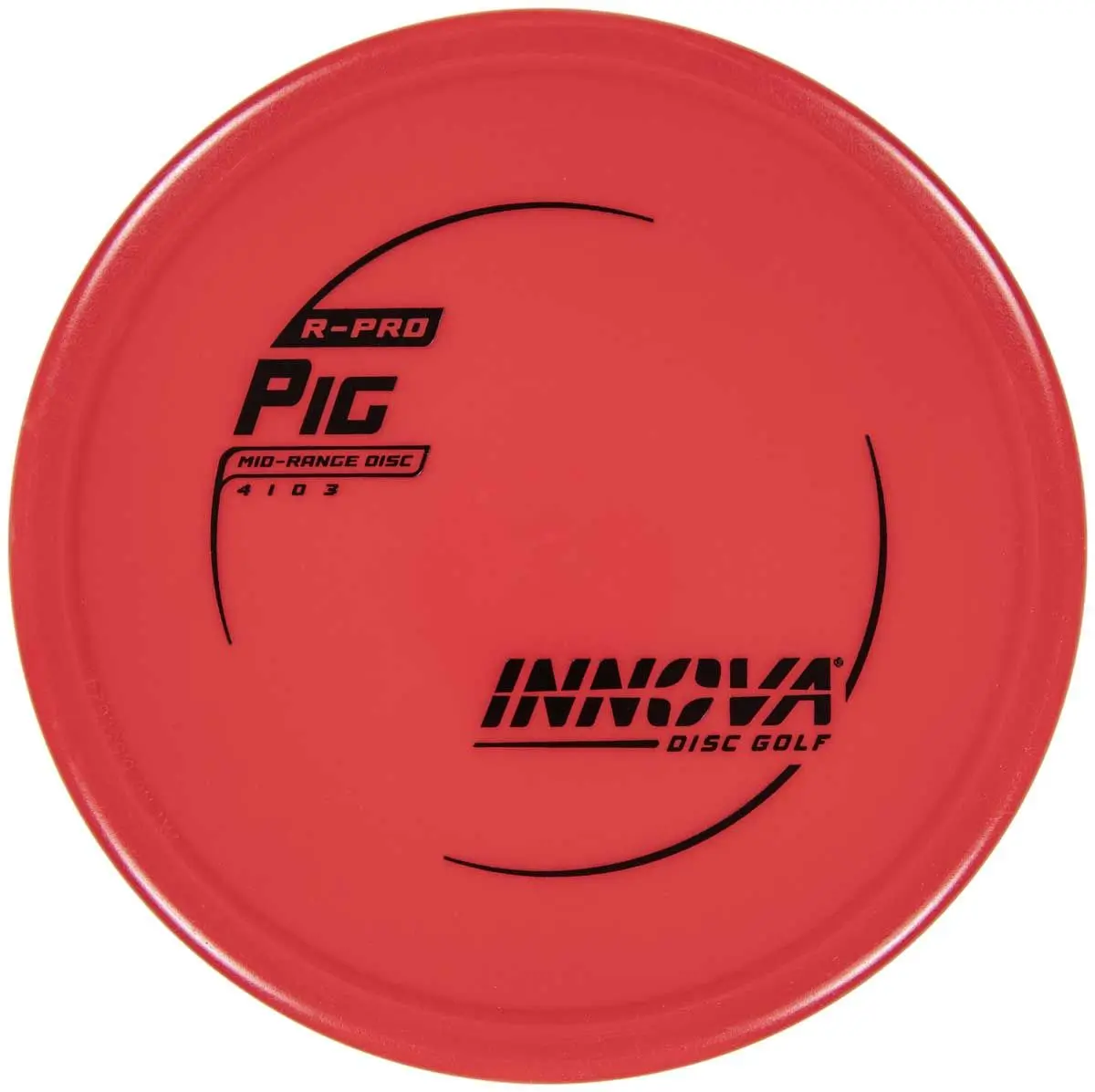
3 Fade: The Innova Pig is an overstable midrange disc. Its heavy Fade allows it to harness the medium length shots, backhand or forehand, for powerful players.
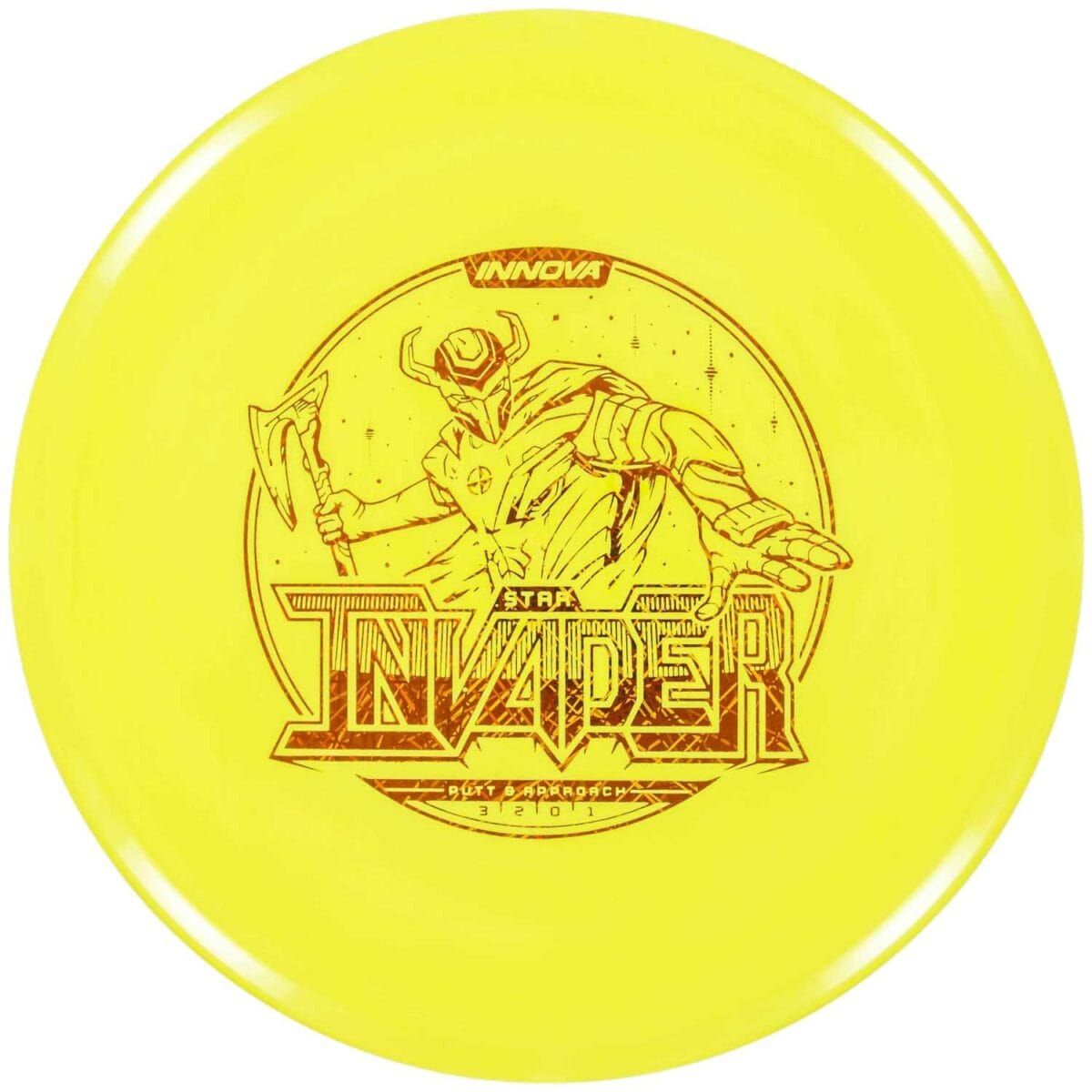
1 Fade: The Innova Invader is a stable to understable putt and approach disc. Its mild Fade keeps this short range disc in-line and on target.
Types of Shots with High Fade Discs
- Spike hyzer
- Backhand power drives & approaches
- Headwind drives & approaches
- Forehand power drives & approaches
- Ground flares
Is Hyzer the same thing as Fade?
How Wind & Other Factors Affects Fade
When it comes to how wind affects Fade, it’s the opposite of Turn. Tailwind = more Fade. While, a headwind = less Fade. This is the case for all discs. As a disc gets more use, even overstable discs, will develop less Fade.
Some plastics are naturally more overstable and contain more Fade. Innova’s Champion and Halo Star plastics are more Fade heavy out of the box than GStar, Pro, or DX plastics.
How to Throw Discs with Fade
Similar to discs with high Turn, discs with high Fade usually don’t need much assistance to do their job. A hard, flat throw will still result in the disc hooking to the left (RHBH). Applying a hyzer release angle will activate that hook finish earlier. Anhzyer releases can result in long force flex drives. However, these require a lot of power with overstable discs.
Turn Vs. Fade: How Turn and Fade Interact
In most cases, discs don’t just contain either Fade or Turn. Usually, they have some of both. This is how disc manufacturers like Innova are able to produce a wide array of discs that can do many things.
Let’s look at a few interesting examples:
The Eagle has -1 Turn but a 3 rating for Fade. For most players, A Fade of 3 is going to easily counteract a -1 Turn, still making the disc overstable.
The Cobra has a Fade of 2 and Turn of -2. Even with a Fade of 2, this disc will either fly straight or understable because of its moderate Turn and low Speed, which we’ll address later.
The TL3 has a -1 Turn and 1 Fade. Combined with the disc’s moderate speed, the offset Fade & Turn make it a stable, straight flyer.
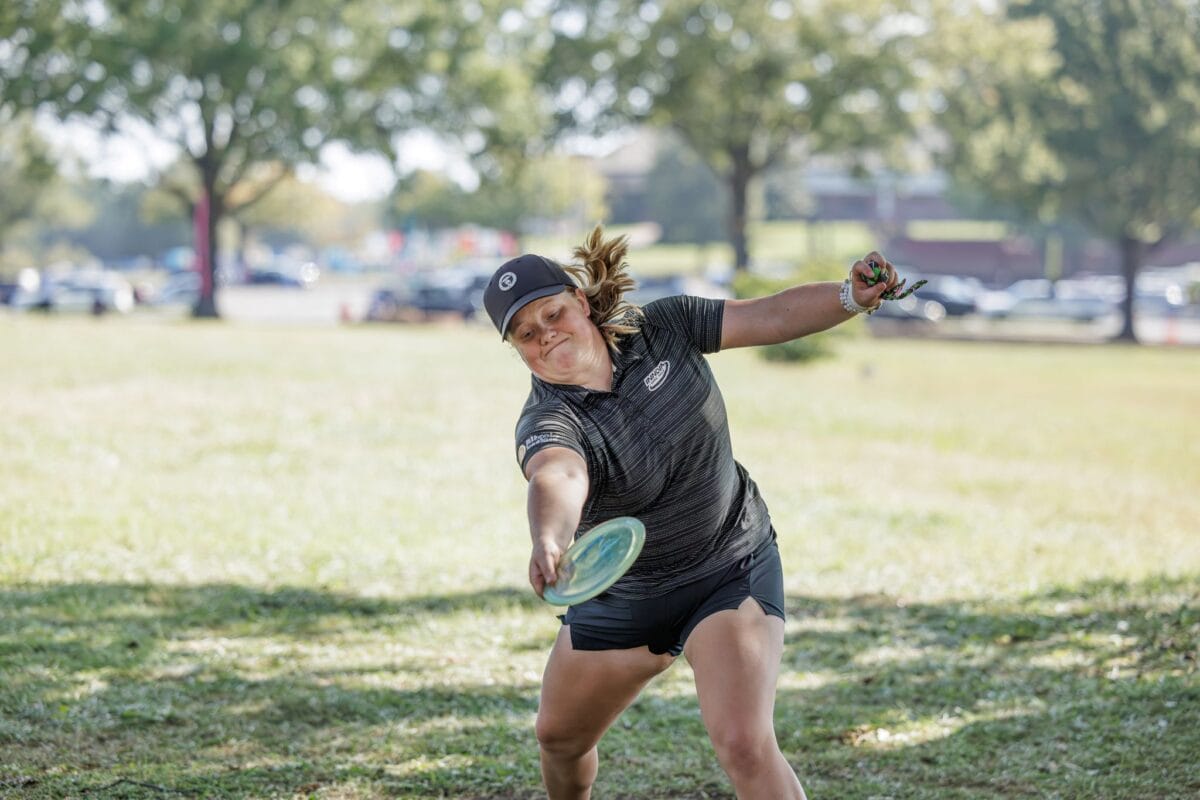
Types of Shots with Balanced Turn / Fade
- Straight fairway shots
- Gradual Anhyzers
- Mild Powered Forehands
Here’s how the amount of Turn and Fade determines disc type (generally speaking):
High Turn / Low Fade = Understable Disc. More Turn present in flight.
High Fade / Low Turn = Overstable Disc. Little to no Turn present. Noticeable Fade (hook) at flight’s end.
High Fade / High Turn = Can Vary. Stable to Understable (in most cases). Often seen in high speed distance drivers. Speaking of speed …
How Speed Affects Turn and Fade
It’s pretty simple, the speedier the disc, the more overstable it is. Here’s an example: Take a putt and approach disc with a Fade of 2. That disc is easier to control than a driver with the same amount of Fade.
So Why is My Disc Still Veering Left?
Most discs thrown RHBH are designed to Fade to the left at some point. But if your throws are immediately going that direction, you’ve got a problem. Here are 3 factors that may be causing this.
1: Slow Arm Speed: Most beginners will lack arm speed (power) at first. Like any new sport you pick up, it usually takes time to build up your confidence, refine your form, and build up power.
2: Release Angle: Most of us tend to naturally have a hyzer release. This means the disc is tilted down and left when released and therefore naturally flies toward the left. Work toward a flatter release angle. This makes a big difference.
3: Disc Stability: What are you throwing? If you’re throwing Destroyers, Firebirds, Roc3’s, and other overstable discs, you’ll have a harder time throwing straight especially if you are beginner. Start with understable or stable (neutral) flying discs. Slower discs are easier to control, too. Start out throwing discs geared for beginners. 9 Speed or slower.
More on +1 Turn
When a disc has a +1 Turn, it will be wanting to Fade as soon as it is released. And, the disc will Fade even more as it slows down.
Keep in mind that the high speed Turn or low speed Fade numbers can only be accurately compared to discs of the same.
For more on disc flight numbers click the button below:
Personalized Disc Recommendations
Just answer a few questions and we’ll send you personalized recommendations within 24 hours.
GET PRO TIPS


